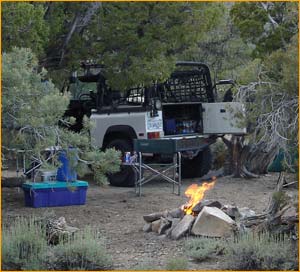 Friends of Jawbone is proud to have received a 2010/11 safety and education grant from the California Off Highway Motor Vehicle Recreation Division (OHMVR) for a project which will increase the accuracy of Jawbone area GPS data. This effort is named “The Owlshead Project” in memory of a young boy whose life was lost in Death Valley National Park in August 2009. It is believed that he and his mother got lost deep in the Owlshead Mountains after following inaccurate information on their GPS.
Friends of Jawbone is proud to have received a 2010/11 safety and education grant from the California Off Highway Motor Vehicle Recreation Division (OHMVR) for a project which will increase the accuracy of Jawbone area GPS data. This effort is named “The Owlshead Project” in memory of a young boy whose life was lost in Death Valley National Park in August 2009. It is believed that he and his mother got lost deep in the Owlshead Mountains after following inaccurate information on their GPS.
The untimely death of young Carlos Sanchez inspired the Friends of Jawbone to create an online library of official, legal backcountry motor vehicle routes in California starting with the greater Jawbone area. Soon the public will be able to consult our website to view and print backcountry route maps, and even download routes directly to supported GPS devices.
The inaccurate background route maps provided by mega data suppliers like Tele-Atlas and Navtec to most GPS manufacturers are unreliable and potentially dangerous to users. These data suppliers tend to overlook the importance of ensuring accuracy and timeliness of backcounty road updates in their GPS system. Once our project is completed, we will share our backcountry route data with these companies so that they can update the major GPS manufacturers and web-based map services with this new data.
Backcountry drivers that travel on designated open routes enjoy increased safety, lessen their impact on sensitive resources, and help preserve our wonderful backcountry driving opportunities for future generations.
You can stay connected to this project at www.jawbone.org.
He called me his little sister; I called him my brother; but we were best friends.
Our beloved friend, fellow desert rat, and Cerro Gordo icon, Mike Patterson passed away on September 24, 2009.
He was only 62 years young.

Moving to Cerro Gordo in 1985 with Owens Valley born Jody Hardin Stewart, they took on together the task of keeping Cerro Gordo alive and well and in a state of restorative reuse. Bringing out the best in all the volunteers who came from far and wide, the many talents in different fields of expertise, kept this dream alive. They met people from all over the world in this little mining camp that was the Comstock to the sleepy little Mexican Pueblo of Los Angeles. Mike & Jody brought the life back into the little camp and put it back on the map by way of magazine and newspaper, short film and documentary.
 Effective October 16, the Bureau of Land Management's (BLM) California Desert District has lifted its campfire restrictions on all BLM-managed public lands in southern California within the California Desert Conservation Area (CDCA). BLM-managed lands in San Diego and western Riverside County remain under Stage II restrictions that only permit campfires within approved fire pits and grills provided for in developed recreational sites.
Effective October 16, the Bureau of Land Management's (BLM) California Desert District has lifted its campfire restrictions on all BLM-managed public lands in southern California within the California Desert Conservation Area (CDCA). BLM-managed lands in San Diego and western Riverside County remain under Stage II restrictions that only permit campfires within approved fire pits and grills provided for in developed recreational sites.
"Because we have declared our fire season over, the public will not be required to obtain a campfire permit throughout the CDCA," said Steven Borchard, California Desert District Manager. "However, campers still are required to provide proper clearance of flammable fuels to a minimum of five feet and to have a shovel or other extinguishing tools readily available."
In May of this year the National Park Service (NPS) announced it was initiating a Wilderness Stewardship Plan for the Congressionally designated wilderness areas within Death Valley National Park (DVNP). The first public input opportunity on the plan will conclude on June 30, 2009.
There are 3.1 million acres of designated wilderness within Death Valley National Park, comprising 93% of the Park. This planning process only applies to these designated wilderness units and, according a DVNP press release, "does not includes non-wilderness backcountry concerns, such as: backcountry road corridors and campsites, backcountry cabins near roads, Saline Valley hot springs, private inholdings or other non-NPS lands, and developed campgrounds."
Although among only a fraction of DVNP visitors, those who spend time in the backcountry wilderness should see this as a good opportunity to be heard on your concerns about the management of Park's wilderness units.
Click here to see the Request for Public Input on the NPS website.

